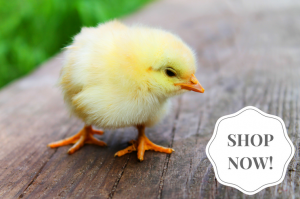
Cackle Hatchery® offers Assorted Peafowl Chicks for sale. What you receive when you order this assortment depends on what’s available at the time. To help you determine which is which, here is a brief guide to the peafowl varieties that might be included.
Color vs. Pattern
Color refers to the dominant color of the peafowl. Available colors in the peachick assortment include blue, midnight, purple, cameo, opal, and white.
Pattern refers to alterations in the colors or their arrangement. Any color can have any pattern, or even more than one pattern. Available patterns in the chick assortment include pied, silver pied, and black shoulder.
India Blue Color
Of all the peafowl varieties, India blue is the original and the most popular. The India blue peacock has barred wings and a metallic blue neck and breast. The peahen is brown with a metallic green neck. Peachicks are brown and buff. By about 6 months the male chicks will develop blue feathers, while the females start showing green.
Only peacocks have a train, which consists of long tail coverts the male displays while courting. The eyes, or ocelli, of an India blue train are dark blue. The multicolored train is iridescent, with different colors showing in different light.
Midnight Color
This color is similar to India blue, but the peacock is darker, less brilliant, and a little less iridescent. The peahen is brown, as are the peachicks.
Purple Color
This variety is a deeper blue than India blue, appearing purplish in the bright sun. The peahen is similar to the India blue, but with some purple in the neck. The purple peachicks look like India blue chicks.
Cameo Color
Cameo peafowl are a shades of brown, tan, and white. These peafowl are not iridescent, like other varieties. The peachicks are creamy tan.
Opal Color
Opal peafowl are two-tone gray and have iridescence similar to that of the opal stone. The peachicks hatch with pale gray down.
White Color
White peafowl, as the name implies, have all white feathers at maturity. They are not albinos, but rather they simply lack color. The chicks are light yellow.
Pied Pattern
In the pied pattern, white feathers replace some of the colored feathers, resulting in white patches. For instance, in a blue pied, white feathers replace some of the blue feathers. Pied bred to pied results in 50% of the chicks being pied, 25% white, and 25% colored (in this example, blue).
Silver Pied Pattern
A silver pied peacock is basically white with up to 20% colored feathers on the neck, upper breast, and tail. The color of the feathers depends on the color variety of the peafowl. Silver pied peahens are white and dark gray. The peachicks are white, often with a dark spot on the head or back.
If you breed a silver pied to a silver pied, 50% of the chicks will be silver pied, 25% will be white, and 25% will have a white-eye pattern. In this case, the word “eye” refers to the eyes, or ocelli, of the peacock’s train.
Black Shoulder Pattern
In the black shoulder pattern, instead of having wing barring, the peacock’s wing is a solid color. In the blue variety, for example, the wings (or shoulders) are black. Despite the name, not all black shoulder peafowl have black wings.
The female is a pale creamy or grayish color with darker, random spots. The chicks are a pale cream at hatch. Their first feathers are white with dark spots. As they mature, the males become darker in color. When a black shoulder is bred to a black shoulder, all the chicks will be black shoulder.
Spalding Peafowl
All the above colors and patterns derive from Indian peafowl (Pavo cristatus species). But any variety of this species will cross with green peafowl, which are a separate species (Pavo muticus). A distinguishing feature of this species is green feathers in the neck. Any peafowl with Pavo muticu ancestry is a Spalding, in reference to the person who first documented the cross.
Spalding peafowl are thinner than Indian peafowl, with longer necks and longer legs. They are also less noisy. The chicks are dark yellow, and larger than Indian chicks. All of the several dozen varieties of Spalding peafowl have at least some green feathers.
Helpful Links
Peafowl Pairs from Cackle Hatchery
Pros and Cons of Raising Peafowl
And that’s today’s news from the Cackle Coop.
Gail Damerow has written several books about keeping poultry, many of them available from the Cackle Bookstore.

